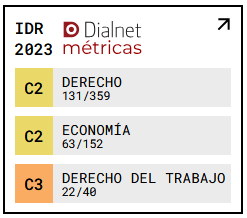Dependency Care in The Liberal Welfare Model
The Cases of Ireland and the United Kingdom
DOI:
https://doi.org/10.18172/redsye.6170Keywords:
dependence, Long-term care, liberal welfare modelAbstract
As it’s well known, the welfare state cares for all citizens have their basics needs covered, at any age and in any circumstances; there are anyway different models in prosecuting the target. Not all the approaches to the concept of the system are although similar, with different visions depending on the country or geographical area. The objective we follow with the present paper is describing the main features of the different services that the Republic of Ireland and the United Kingdom, two of the so-called liberal welfare system, offer to their citizens in several aspects of long term care assistance.
Downloads
References
Eurofound (2015). Working and caring: Reconciliation measures in times of demographic change. Publications Office of the European Union, Luxembourg.
Comisión Europea (2016). Joint Report on Health Care and Long-Term Care Systems and Fiscal Sustainability. Volume 1. Economic and Financial Affairs Economic Policy Committee institutional paper, nº 37.
LOPEZ, E., DE PAZ, S., (2010). El envejecimiento de la población y la Ley de Dependencia. Diario La Ley, nº7475.
RODRÍGUEZ, G., MARBÁN, V., (2013). La atención a la dependencia en una perspectiva eu-ropea: de la asistencialización a la cuasi-universalización. Los Estados de bienestar en la encrucijada: políticas sociales en perspectiva comparada. Madrid, Editorial Tecnos.
SANTACREU, A. M., (2016). Long-run Economic effects of change in the age dependency ratio. Federal Reserve Bank of St. Louis, nº17.
WALKER, A., (1982). Dependency and Old Age. Social Policy & Administation, 16:115-135.
Downloads
Published
How to Cite
Issue
Section
License

This work is licensed under a Creative Commons Attribution-NonCommercial-NoDerivatives 4.0 International License.











